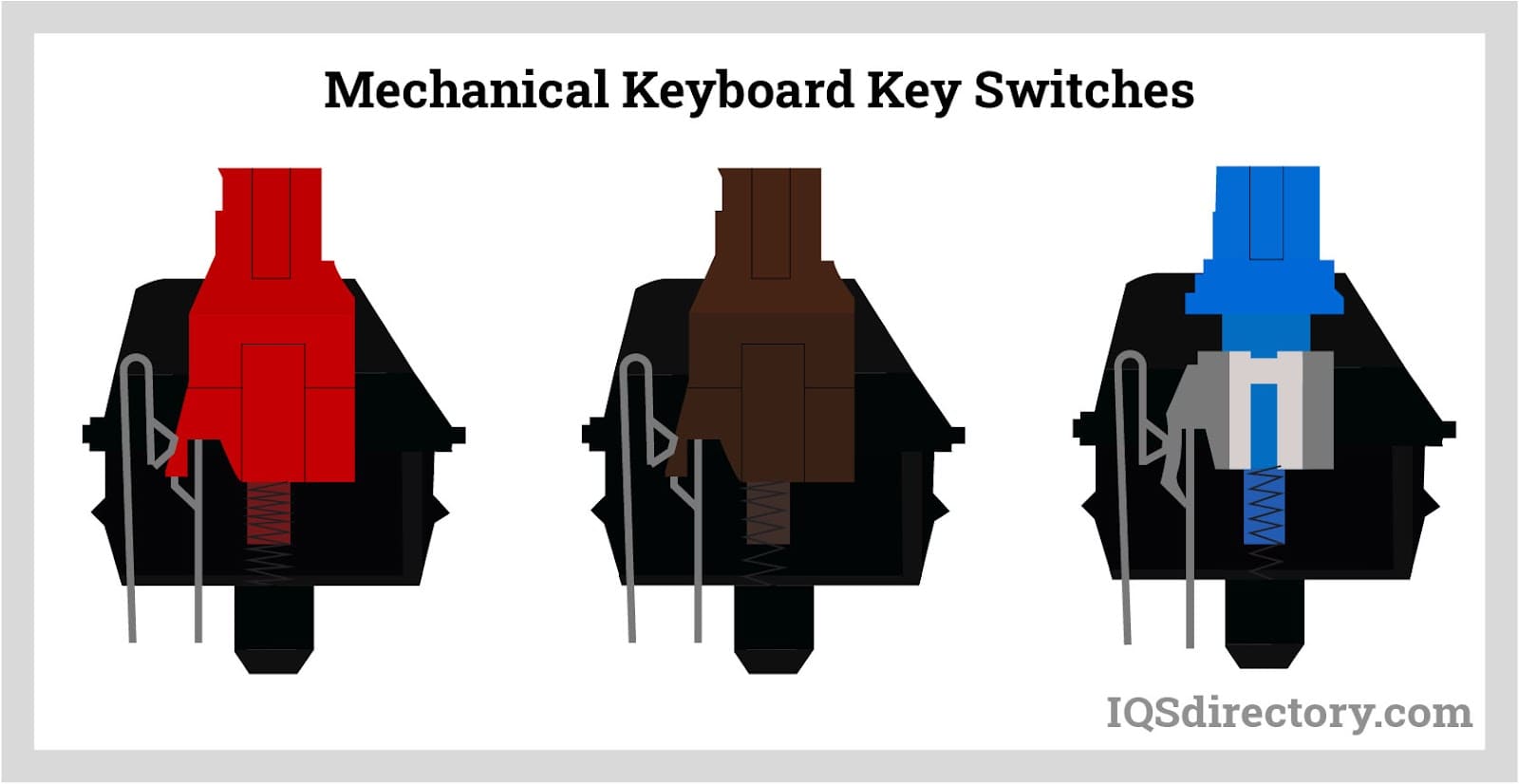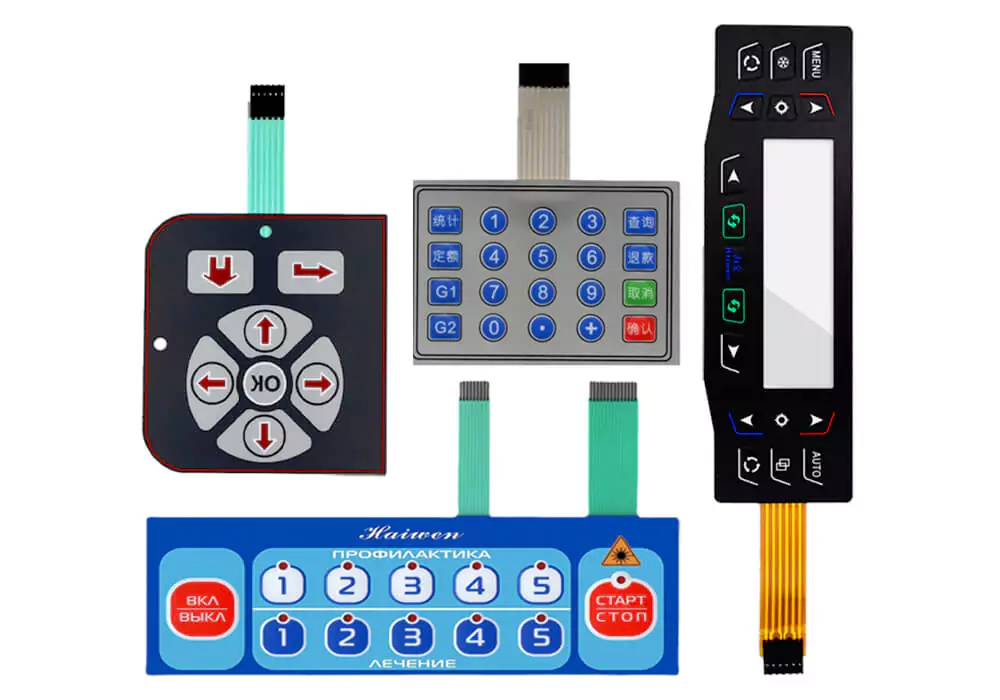Understanding the Value of Membrane Layer Switch Over in Modern Electronic Devices
Membrane switches are integral components in contemporary digital gadgets. They supply a mix of capability and design that boosts user communication. Their sturdy and lightweight nature makes them appropriate for numerous applications. As sectors progress, the need for personalization and advanced functions expands. Understanding just how membrane switches over add to technology discloses their importance fit the future of electronics. What exists in advance for this technology?
The Fundamentals of Membrane Switch Over Innovation
Although usually overlooked, membrane button modern technology plays a crucial duty in the modern electronics landscape - membrane switch. These devices, composed of several layers, offer as interface for different digital items, ranging from household devices to clinical equipment. A common membrane button contains a graphic overlay, a spacer layer, and a circuit layer, which are thoroughly assembled to develop a useful interface.When stress is put on the overlay, the circuit layer is finished, allowing signals to be sent to the device. This technology is recognized for its versatility, allowing modification in layout, shape, and capability to satisfy particular user demands. In addition, membrane layer switches are thin and light-weight, making them appropriate for applications where room is a costs. Their toughness and resistance to ecological factors better boost their appeal, guaranteeing they can withstand extreme problems while preserving functionality. On the whole, membrane button innovation is integral to developing easy to use and efficient electronic gadgets

Secret Advantages of Membrane Layer Changes
Membrane layer switches over offer numerous crucial benefits that make them a favored selection in different electronic applications. Their layout enables a compact type aspect, making it possible for manufacturers to create light-weight and streamlined tools. Additionally, membrane buttons are immune to dust, moisture, and chemicals, which boosts their durability and long life sought after settings. The tactile feedback offered by these buttons can improve user experience, making them instinctive and easy to operate.Furthermore, membrane layer switches can be personalized with diverse graphics and shades, allowing for unique branding chances. The manufacturing procedure is normally cost-effective, especially for high-volume production, as it minimizes assembly time and streamlines layout. Lastly, membrane switches need minimal maintenance, adding to reduced total operational expenses. These benefits underscore their expanding appeal in modern electronics, where reliability and user-friendly user interfaces are crucial.

Applications Across Numerous Industries
The convenience of membrane switches over enables their prevalent fostering across various sectors. In the medical area, they are generally made use of in diagnostic equipment and client monitoring systems, supplying a long lasting user interface resistant to contaminants. The automobile industry makes use of membrane buttons for dashboard controls, boosting user experience with smooth styles that withstand extreme conditions. In customer electronics, they function as control panels for tools such as microwaves and coffee manufacturers, offering a straightforward user interface that is simple to clean. The aerospace market employs membrane buttons in cockpit controls, where reliability and room performance are critical. In addition, the industrial market leverages these buttons in machinery and control systems to guarantee durable procedure sought after settings. This broad series of applications underscores the versatility of membrane buttons, making them integral elements in enhancing capability and customer communication across diverse technical landscapes.
Personalization and Style Versatility

Future Patterns in Membrane Layer Switch Growth
Emerging patterns in membrane switch growth suggest a growing focus on boosted performance and assimilation with smart modern technologies. As consumer need for extra advanced digital gadgets rises, manufacturers are concentrating on developing membrane layer switches that not just serve fundamental operational roles yet additionally include features like touch sensitivity, backlighting, and haptic feedback.Furthermore, developments in materials are anticipated to improve toughness and ecological resistance, making membrane layer switches ideal for varied applications in industries such as medical care, vehicle, and consumer electronics. The assimilation of capacitive touch innovation is likely to become much more prevalent, allowing for sleeker layouts and improved individual interfaces. membrane switch.Additionally, the increase of the Net of Points (IoT) is motivating the growth of membrane layer changes that can interact wirelessly with other devices, enhancing interconnectivity. Generally, the future of membrane button modern technology shows up promising, driven by development and the search of user-friendly remedies
Regularly Asked Inquiries
Just How Do Membrane Changes Compare to Traditional Mechanical Buttons?
Membrane layer buttons, being a lot more space-efficient and offering a sleek layout, contrast with typical mechanical buttons that supply tactile comments. The former frequently include customizable graphics, while the last usually assure toughness and reliability in different applications.
What Materials Are Generally Utilized in Membrane Layer Switch Over Manufacturing?
Membrane layer switches are usually created utilizing materials such as polyester, polycarbonate, and published conductive inks. These products offer responsiveness, resilience, and adaptability, making them ideal for different applications in electronic gadgets and interface.
Can Membrane Switches Over Be Fixed or Reused?
Membrane switches can usually be fixed, specifically if small concerns emerge, such as sticky failure or surface area damages. Total reuse is commonly restricted due to use and possible degradation of products over time.
Just How Do Environmental Variables Impact Membrane Change Efficiency?
Ecological factors, such as temperature level, moisture, and direct exposure to chemicals, considerably influence membrane layer switch performance. Severe problems can lead to degradation, impacting responsiveness and longevity, inevitably jeopardizing the performance of the gadget in numerous applications.
What Is the Normal Life-span of a Membrane Switch over?
The regular life-span of a membrane layer switch typically varies from 1 to 5 million actuations, depending upon elements such as use regularity, ecological problems, and the products utilized in production, affecting toughness and performance long click over here life. A typical membrane button is composed of a graphic overlay, a spacer layer, and a circuit layer, which are diligently constructed to develop a useful interface - membrane switch.When stress is used to the overlay, the circuit layer is completed, allowing signals to be transmitted to the tool. The tactile comments offered by these buttons can boost user experience, making reference them very easy and intuitive to operate.Furthermore, membrane layer buttons can be tailored with varied graphics and colors, allowing for unique branding opportunities. As customer demand for more sophisticated electronic devices rises, manufacturers are focusing on producing membrane switches that not just serve fundamental functional functions but additionally incorporate attributes like touch level of sensitivity, backlighting, and haptic feedback.Furthermore, innovations in products are expected to enhance resilience and environmental resistance, making membrane layer switches over appropriate for varied applications in industries such as healthcare, vehicle, and customer electronics. The combination of capacitive touch modern technology is likely to come to be a lot more prevalent, enabling for sleeker layouts and boosted user interfaces.Additionally, the increase of the Web of Things (IoT) is prompting the growth of membrane changes that can interact wirelessly with various other gadgets, improving interconnectivity. Membrane buttons, being a lot more space-efficient and providing a streamlined layout, comparison with traditional mechanical buttons that give tactile responses